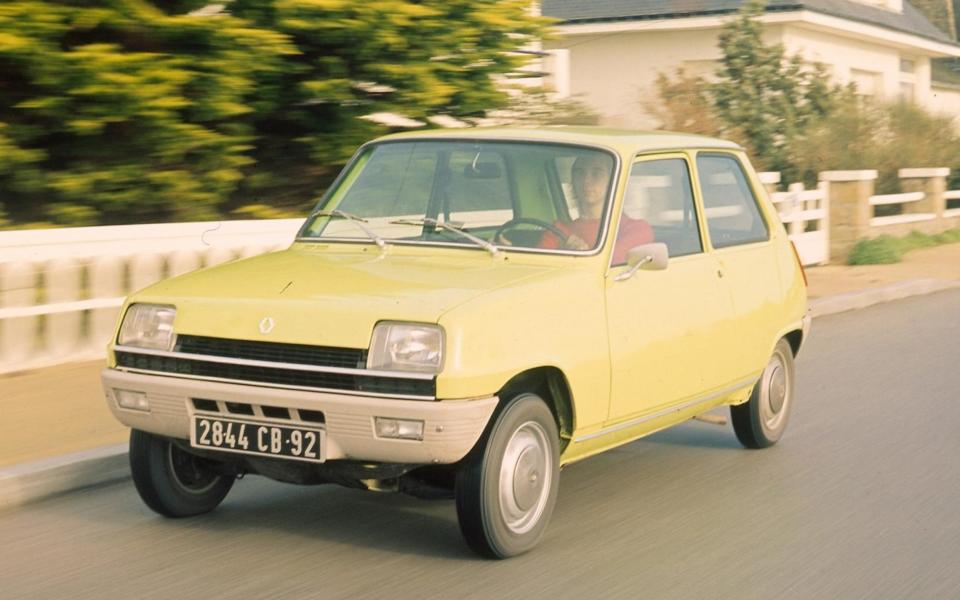Small electric cars are suddenly sexy as Renault reveals its R5

“Renault’s new baby,” screamed The Evening Times headline in December 1971 as the French manufacturer revealed its all-new R5 model. In the US they called it Le Car and in Europe it was the darling of every young thing, old thing, in fact anyone with a driving licence. It was France’s best-selling car for 10 years and over two generations from the start of the 1970s to the mid-90s Renault produced more than nine million of the things. Success, then? Oui!
Fifty-three years on and we’re doing exactly the same, with the reveal of the almost production-ready new R5, a battery-electric supermini, which goes on sale early next year at rumoured prices between £25,000 and £30,000.
Renault might be considered on a roll, fresh from taking the 2024 Car of the Year award for its Scenic E-Tech, presented at the start of the Geneva motor show.
Will the new R5 be as great a success as the original? In an EV-dominated world, this is the new battleground for the motor industry, to be able to profitably produce a smallish (under four metres in length) and affordable battery vehicle, with a decent range, which could act as a family’s only car as well as a city runaround.
Under the skin
The R5 will be offered with a choice of two battery sizes and two motors in the UK; the 40kWh 120bhp model has a WLTP range of 186 miles while the 52kWh, 150bhp version has an equivalent range of 248 miles. With DC fast charging capped at 80 and 100kW respectively, both cars can be recharged from 15 to 80 per cent of charge in half an hour.

Making small cars profitably has been described recently as the “Champions League of car-making” by Volkswagen boss Thomas Schäfer. So has Renault cracked the code with this new electric supermini?
Certainly its toy-car looks are highly reminiscent of the Michel Boué-designed 1970s original. The talented stylist had penned the original shape in his spare time and when Renault management saw his sketches, they embraced the project, which is a far cry from today’s marketing-led corporate development.
Le Cinq had a 956cc four-cylinder engine giving a top speed of 84mph and it was produced in various guises around the world for almost a quarter of a century.
Weighty issues
But while the original was a three-door hatchback (at least to start with), the latest iteration has five doors and is much larger, 3,922mm long and 1,808mm wide against the original’s length and width of 3,521mm and 1,525mm. And as a consequence of its size and lithium-ion NMC battery pack in the floor, the new R5 is also heavier; at it heaviest with the largest battery option, it weighs 1,449kg, which is twice as heavy as the 730kg original R5. Like the original, the latest R5 also has a tiny boot of only 326 litres, although unlike other small cars in this EV sector it will tow up to 500kg of trailer.
It will sport some of the latest technological whizz bangs in the EV industry, such as vehicle-to-grid connection to allow the car to run separate motors or lights, or charge another EV with a low battery. There’s a highly efficient heating system to allow the interior to be warmed when on the charger, which saves current on cold mornings and there’s a control app for your phone to allow this to happen.

While the R5 will debut a lot of driver assistance and monitoring systems, there is thankfully Renault’s personalisation button which allows drivers to select with one button just which of those systems will be monitoring your progress. The only black mark for technophobes is the annoying animated avatar based on the Victory Vasarely-designed Renault badge, which appears on the screen like Microsoft’s irritating paperclip avatar Clippit. Thankfully, you can turn it off.
Standout design
There’s not a bum note to be seen. With its unique design LED lights and interior, Frederic Morelle, the chief engineer, admits it hasn’t been the cheapest car to produce, “but it is an iconic object in its own right and needs its own jewellery”.
He says his team is very proud of the R5 and Renault management has been equally impressed. “They see it and love it, they climb in and love it and they drive it and say: ‘Wow Frederic, this is wonderful. A B-segment car, are you sure?’”
Typically for partly state-owned Renault, R5 production is an all-French affair with the motors, battery and vehicle assembly centred on Renault’s plants in northern France, respectively Cléon, Ruitz and Douai. The battery cells come from AESC Envision, a battery maker started by sister company Nissan, but now 75 per cent owned by Chinese battery maker Envision.
While the Chinese are threatening to flood the market for small electric cars, none of them are quite as compact as the B-segment R5. The BYD Dolphin and MG MG4 are both longer than four metres. There’s no word on the promised Nio Firefly, either, which is also aimed at this market.
There was a spoiler from Fiat (not at the Geneva show, but instead at an Italian town with a similar name), with five versions of next year’s new Panda. It’s larger than the current model, so comfortably over four metres in length, and weirdly including pickup, SUV and even Camper versions, which surely is missing the point in the biggest possible way.
In fact the only car that might be seen as a direct competitor for the Renault R5 is the new Citroën ëC3, which arrives this year with a mooted price of about £21,000 and a range of 198 miles.
We couldn’t possibly comment, but you might wryly observe that this looks awfully like history repeating itself, with Renault’s 4 pitted against Citroën’s 2CV.
Let battle commence.

 Yahoo News
Yahoo News 
